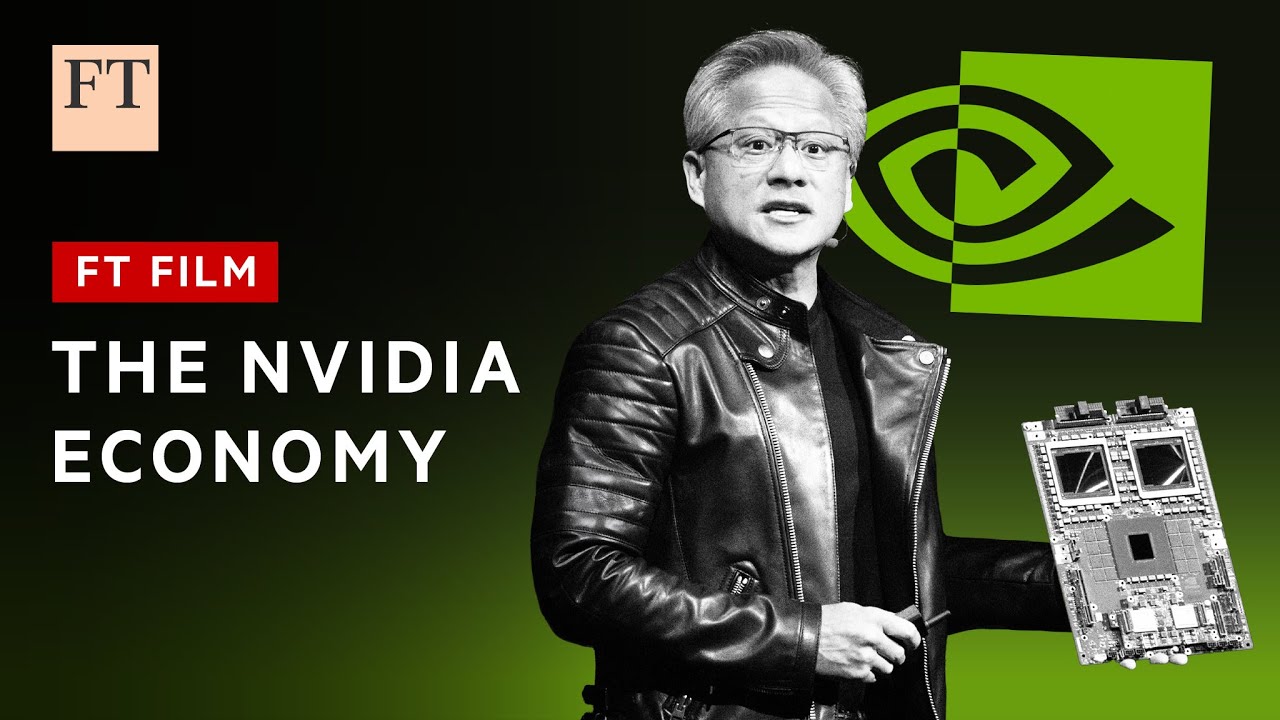The video explores Nvidia’s remarkable growth in the AI era, driven by the demand for its powerful chips essential for AI development, while highlighting concerns about competition from companies like DeepMind and the geopolitical implications of chip manufacturing. It emphasizes the need for real-world applications and revenue generation in the AI sector, as well as the challenges posed by job displacement and market sustainability amidst rapid technological advancements.
The video discusses Nvidia’s significant rise in the age of artificial intelligence (AI) and its pivotal role in the ongoing technological revolution. Nvidia has experienced remarkable revenue growth, with increases of over 200% year-on-year, largely due to the demand for its powerful chips that are essential for AI development. The emergence of AI technologies, particularly from companies like DeepMind, has raised concerns about the competitive landscape, with some arguing that the U.S. is falling behind China in AI advancements. Despite export controls preventing the best Nvidia chips from reaching China, DeepMind has managed to create competitive AI models, prompting fears among U.S. tech firms.
Nvidia’s chips have become crucial for AI development due to their flexibility and performance, allowing companies to scale their operations and improve algorithms. The company has transformed from a gaming-focused business into a leader in AI technology, with its GPUs being integral to the development of large language models like ChatGPT. This shift has positioned Nvidia as one of the most valuable companies globally, competing closely with tech giants like Apple and Microsoft. However, the rise of competitors like DeepMind has sparked concerns about Nvidia’s dominance and the potential for new players to disrupt the market.
The video highlights the geopolitical implications of AI and chip manufacturing, particularly the reliance on Taiwan Semiconductor Manufacturing Company (TSMC) for chip production. The U.S. government has imposed strict export controls on advanced chips to China, aiming to curb its AI capabilities. However, these restrictions have inadvertently spurred innovation within China, as companies like DeepMind find ways to develop competitive technologies without access to the most advanced chips. This situation raises questions about the effectiveness of U.S. export controls and the need for a more robust strategy to maintain technological leadership.
Nvidia’s CEO, Jensen Huang, is portrayed as a dynamic leader who has fostered a culture of innovation within the company. His management style is characterized by a hands-on approach, allowing him to engage directly with engineers and their projects. This unique corporate culture has contributed to Nvidia’s rapid growth and adaptability in the fast-evolving tech landscape. The video also touches on the historical context of Nvidia’s success, noting that the company initially struggled before capitalizing on the growing demand for AI and machine learning technologies.
Finally, the video emphasizes the broader implications of AI’s rise, comparing it to the Industrial Revolution. While there is immense optimism about AI’s potential to transform industries and create wealth, there are also concerns about job displacement and the sustainability of current valuations in the tech sector. The video concludes by highlighting the need for real-world applications and revenue generation to justify the investments being made in AI, as the industry navigates the challenges of competition, innovation, and geopolitical tensions.
